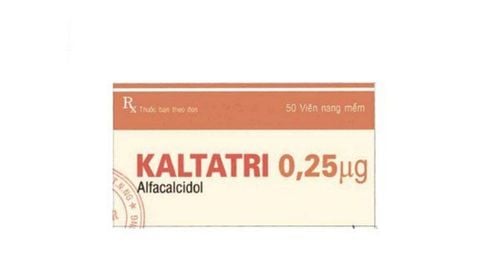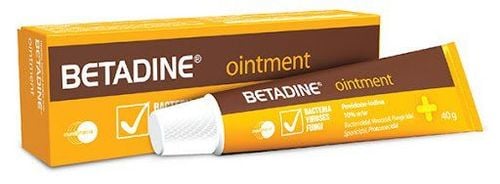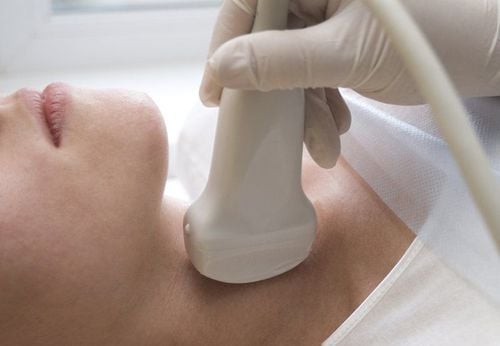This is an automatically translated article.
The article is professionally consulted by Professional Advisor, Associate Professor, Dr. Hoang Dang Mich and Master, Doctor Do Xuan Chien - Department of Medical Examination and Internal Medicine - Vinmec Ha Long International General Hospital.The danger of a thyroid storm manifests itself in the early symptoms of a thyroid storm, including fever, tachycardia, emotional disturbances, central nervous system hyperactivity, thyroid coma, or coma with myxedema. If left untreated, it can lead to heart failure, pulmonary edema, cardiovascular collapse, coma, and death within 72 hours.
1. What is an armor storm?
Thyroid storm is a decompensated condition of hyperthyroidism that can be life-threatening. Diagnosis of thyroid storm is based on suggestive clinical symptoms and must be treated immediately before laboratory tests are available. Despite early detection and treatment, mortality is still 10% and above 30% when hyperthermia, heart failure, and arrhythmias are present.
All stress events (hypercatecholamines) in patients with hyperthyroidism can lead to a thyroid storm.
Some causes of thyroid storm include:
After thyroid surgery, trauma, stress, emotions. Patients with untreated, or inadequately treated, hyperthyroidism suffer from additional stress and infections such as: encephalitis, meningitis, other infections; or serious serious illness, toxic pregnancy, childbirth, palpation of the thyroid gland... In some sensitive patients, an increase in blood hormones due to early discontinuation of antithyroid drugs, due to the use of I131, drugs containing iodine, thyroid hormone overdose.
2. The danger of storm surge
The danger of thyroid storm is manifested in the early symptoms of thyroid storm, including: fever, tachycardia, emotional disturbances, central nervous system hyperactivity, thyroid coma, or coma with myxedema. If left untreated, it can lead to heart failure, pulmonary edema, cardiovascular collapse, coma, and death within 72 hours.
Common symptoms of a thyroid storm include:
Fever, almost always present, varies from 37 to 41 degrees. The patient sweats a lot leading to dehydration. Neuropsychiatric symptoms occur in 90% of cases. Symptoms vary from anxiety agitation, confusion, delirium, psychosis, altered consciousness, coma. Cardiovascular symptoms: Tachycardia, exceeding the value of temperature, usually in the range of 120-200 beats/minute, can be up to 300 times/minute, arrhythmias such as atrial fibrillation, extrasystoles ventricular failure, congestive heart failure, especially in elderly patients. Blood pressure usually does not change, if blood pressure drops, the outcome will be very bad. Patients can die in the setting of congestive heart failure, especially in elderly patients. Blood pressure usually does not change, if blood pressure drops the outcome will be very bad. Patients can die in the context of congestive heart failure, acute pulmonary edema, cardiovascular collapse. Gastrointestinal symptoms: Patients may have vomiting, nausea, abdominal pain, diarrhea. Occasionally patients have jaundice, mild hepatomegaly due to congestion or hepatocellular necrosis. Jaundice is a bad sign. Myasthenia gravis is also prominent, mainly in the proximal trunk. In severe cases, muscle weakness may occur in the limbs, trunk, and face. There are also other symptoms of hyperthyroidism such as smooth warm skin, sweating, sharp eyes, and upper eyelid muscle twitching. Enlarged thyroid gland, murmur, or not Sometimes there may be apathy, the patient is paralyzed, comatose, the body temperature is only slightly raised, this form is common in elderly patients with multiple thyroid nodules. toxic personification. The insensitivity may be masked by a prominent, often cardiovascular symptom, such as atrial fibrillation and heart failure. Liver function is also often disturbed. There may be hypercalcemia, hyperglycemia. Low blood sugar is a bad sign.
3. How to treat thyroid storm
Below is the protocol to manage thyroid storm during disease treatment:
3.1. Restore and maintain vital signs Infusions are usually isotonic saline solutions, correcting fluid and electrolyte disturbances. Also need to add vitamin B group. Cool down with Acetaminophen. Treat heart failure if present with digitalin and diuretics. Treat arrhythmias with commonly used antiarrhythmic drugs. Let the humid oxygen smell. Sedatives must be used with great caution.
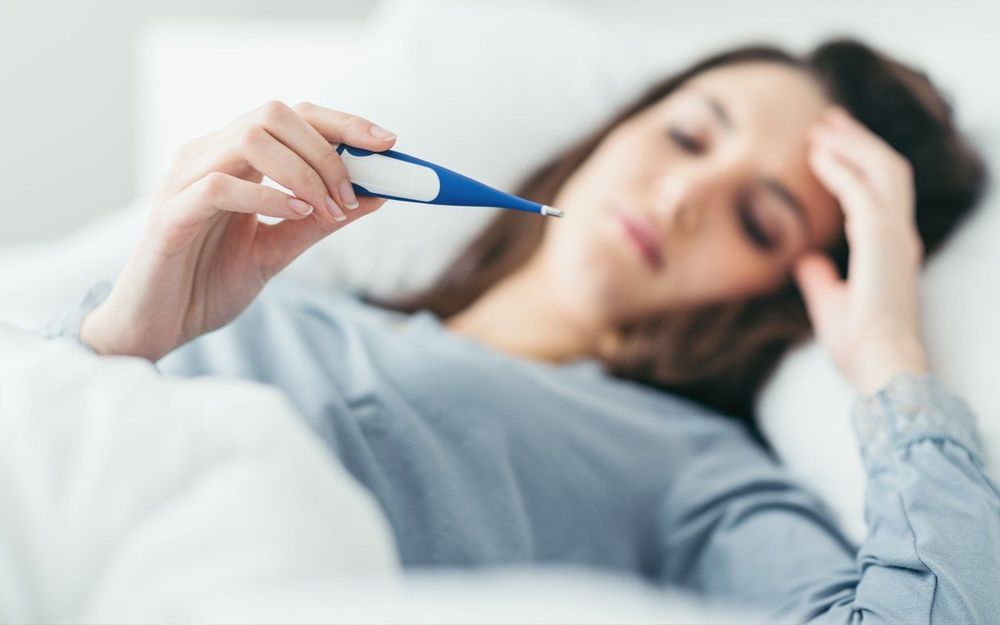
3.2. Inhibition of hormone synthesis and release 3.2.1 Synthetic PTU oral antithyroid drugs: first dose 300-400mg, then 200mg/4 hours or immediately 100mg/2 hours in the first day, then 300-600mg/day in 3-6 weeks until hyperthyroidism is under control. If the patient cannot drink, the drug can be given through a nasogastric tube or rectally. If PTU is not available, oral Methimazole can be used, the first dose is 30-40mg, then 20-30mg orally every 8 hours in the first day and 30-60mg/day in the following days. 3.2.2 Iodine solution Give only 1-2 hours after using synthetic antithyroid. Possible use: NaI 1 gram IV slowly every 8-12 hours or 0.25 grams IV every 6 hours. Ipodate or Iopanoic acid 0.5 mg orally every 12 hours. Saturated Iodine Solution (SKI) 6-8 drops orally every 6 hours. If the patient is allergic to iodine, Lithium 300mg 3-4 times a day can be used, monitor the serum Lithium concentration in the range of 1-1.2 mEq/L 3.2.3 Corticosteroids Dexamethasone 2mg every 6 hours orally or by injection can be used. IV or Hydrocortisone 50-100mg IV every 6-8 hours.
3.2.4 Sympathomimetic drugs The most commonly used drug is propranolol 40-80mg orally every 4-6 hours, when taking the drug takes effect after 1 hour If the patient can't take it, propranolol can be used slowly intravenously. averaging 1 mg per minute up to a maximum dose of 0.15 mg/Kg body weight. Effects on cardiovascular and neurological symptoms may appear after 10 minutes, the dose can be repeated after 4 hours if necessary. Propranolol should not be used in the presence of heart failure or, if so, after digitalin and diuretics or with means of monitoring left ventricular filling pressure. Rapid-acting Esmolol can be used as an alternative to Propranolol. Reserpine has the effect of reducing catecholamine stores. The first dose is 1-5 mg IM, followed by 1-2.5 mg every 4-6 hours IM. Symptoms improve after 4-8 hours. Side effects of the drug are depression, abdominal pain, diarrhea. 3.3. Find and treat predisposing factors Antibiotic treatment if infection is suspected... However, specific treatment for thyroid storm must be initiated first. Do not wait for complete test results to begin treatment.
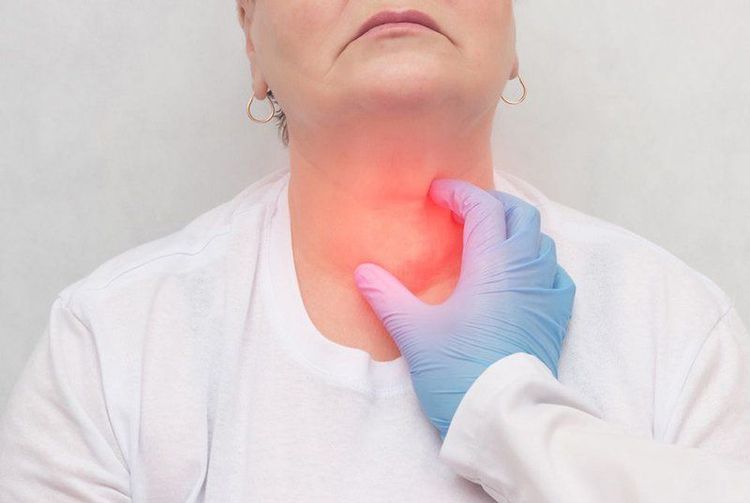
3.4. Progress with treatment After combining treatment with PTU (propylthyuracil), iodine solution and dexamethasone T3 concentration usually returns to normal after 24-48 hours. After clinical stability can gradually reduce the dose of Dexamethasone, Iodine. PTU will be continued until metabolism is near normal, then Iodine should be discontinued and long-term treatment considered, usually I 131. A thyroid storm can last 1-8 days, with an average of 1 to 8 days. 3 days. If conventional treatment is unsuccessful, peritoneal dialysis or dialysis may be used to remove hormones. The mortality rate without treatment is close to 100%. Patients may also die from comorbidities. That is the reason for Vinmec International General Hospital to launch a package of screening and screening for thyroid diseases. Screening & early detection of common thyroid diseases such as simple goiter, hyperthyroidism, hypothyroidism, thyroiditis, thyroid nodules, thyroid cancer, etc. appropriate and timely treatment.
Please dial HOTLINE for more information or register for an appointment HERE. Download MyVinmec app to make appointments faster and to manage your bookings easily.






